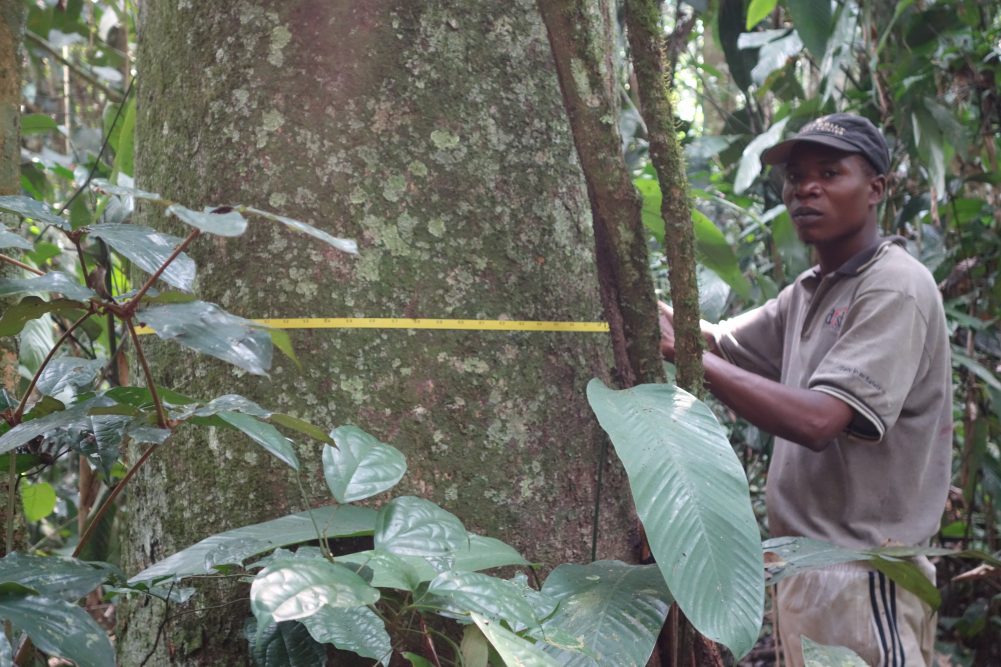
Posted by Ted Feldpausch
16 May 2020Competition among trees is an important driver of community structure and dynamics in tropical forests. Neighboring trees may impact an individual tree’s growth rate and probability of mortality, but large-scale geographic and environmental variation in these competitive effects has yet to be evaluated across the tropical forest biome.
In this study, we quantified effects of competition on tree-level basal area growth and mortality for trees ≥10-cm diameter across 151 ~1-ha plots in mature tropical forests in Amazonia and tropical Africa by developing nonlinear models that accounted for wood density, tree size, and neighborhood crowding. Using these models, we assessed how water availability (i.e., climatic water deficit) and soil fertility influenced the predicted plot-level strength of competition (i.e., the extent to which growth is reduced, or mortality is increased, by competition across all individual trees).

Fig. 1. Maps of the plot locations across gradients in climatic water deficit (CWD) and soil total exchange bases (TEB). (a) Amazonia (102 plots); (b) tropical Africa (49 plots).
On both continents, tree basal area growth decreased with wood density and increased with tree size. Growth decreased with neighborhood crowding, which suggests that competition is important. Tree mortality decreased with wood density and generally increased with tree size, but was apparently unaffected by neighborhood crowding.

Fig. 2: Effects of wood density (WD), tree size, and competition (subplot neighbor basal area; BAneigh) on predicted annual basal area growth and mortality across Amazonia (n = 102 plots) and tropical Africa (n = 49). Solid lines and symbols indicate predicted effects based on the posterior means; shaded areas indicate the 95% credible interval. Boxplots indicate the distribution of the variable on the x-axis. BAneigh was kept constant at the mean for quantifying effects of WD and tree size on growth and mortality; tree size was kept constant at 20-cm diameter for quantifying effects of WD and BAneigh. dbh = diameter at breast height.
Across plots, variation in the plot-level strength of competition was most strongly related to plot basal area (i.e., the sum of the basal area of all trees in a plot), with greater reductions in growth occurring in forests with high basal area, but in Amazonia, the strength of competition also varied with plot-level wood density. In Amazonia, the strength of competition increased with water availability because of the greater basal area of wetter forests, but was only weakly related to soil fertility. In Africa, competition was weakly related to soil fertility and invariant across the shorter water availability gradient.
Overall, our results suggest that competition influences the structure and dynamics of tropical forests primarily through effects on individual tree growth rather than mortality and that the strength of competition largely depends on environment-mediated variation in basal area.
Header image credit: Tree measuring in Gabon, Simon Lewis
Read more:
D. M. Rozendaal et al., Competition influences tree growth, but not mortality, across environmental gradients in Amazonia and tropical Africa. Ecology, (2020).